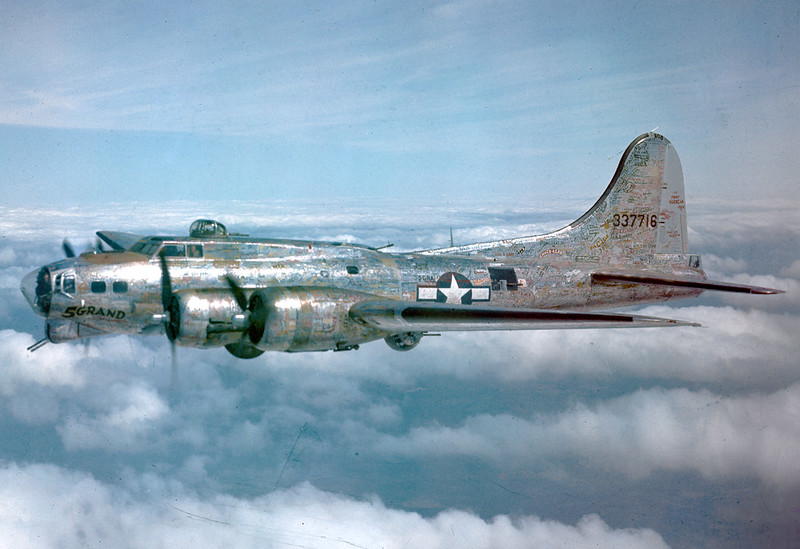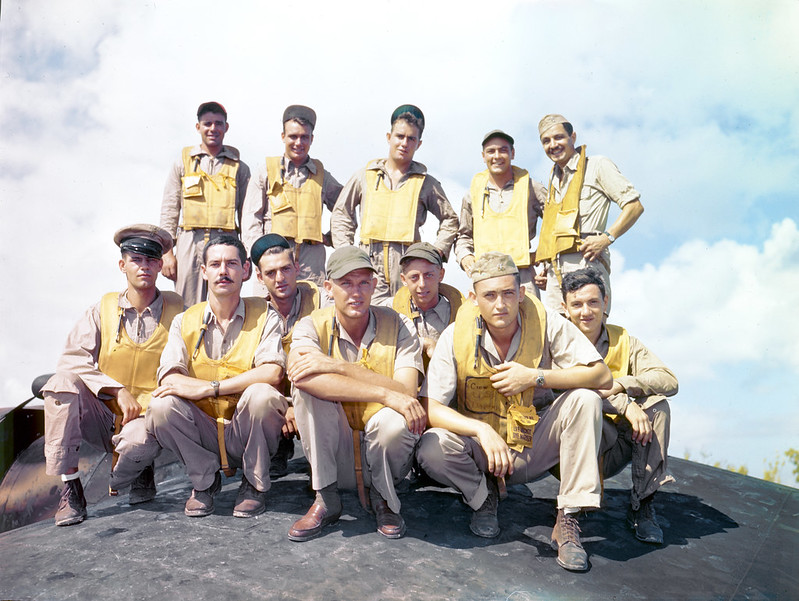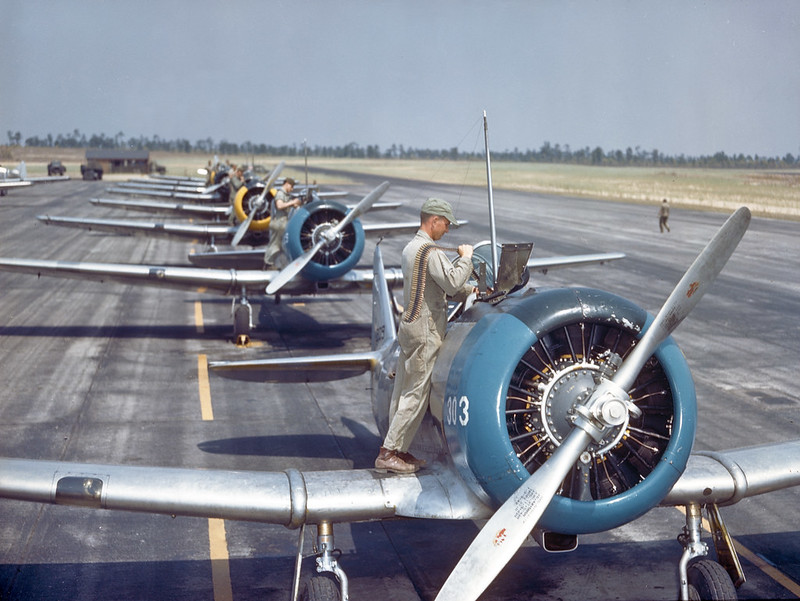
World War II in Color, Part II
Aug 24, 2020
By Roger Connor
As we continue exploring images to feature in the Museum’s upcoming World War II gallery, there are several themes to note among these incredible color photographs from World War II. The first is the human face of the American experience. For the Museum’s aviation perspective on the war, we are looking at the nation’s participation in the air war through three lenses – aircrew, ground crew, and the war workers that built the aircraft. Each had an enormous role to play and for every person that went aloft were dozens of support personnel that made that flight possible.
These images reflect another telling theme: that aviation is a system of technologies. Fighter planes and bombers, along with their crews, depended on infrastructure ranging from hangars, runways, and air traffic control, to training equipment and new methods of production. While many people identify aeronautical effectiveness during the war with the development of major engineering feats like jet propulsion, the ability to carve out hundreds of new airfields in remote areas in mere days or weeks was often far more important.
Third, Allies figure prominently in the images. Americans recall World War II in a way distinct from much of the world, as the nation avoided most of its destruction while significantly enhancing its geopolitical reach. Aviation played a central role in the international partnerships that made this possible. Many of the more than 300,000 airplanes built in the United States during the war went to Allied nations to fight the Axis, while American planes were given access to operate from bases on six continents.
To view the full descriptions of images below, click on the • • • icon (three dots).
Images can be downloaded in full resolution by clicking on the image and downloading via Flickr webite. Please note that a desktop web browser is required (or a mobile browser in desktop mode) to access this feature.
Roger Connor is the lead curator for the Museum’s new World War II gallery in development.
Related Topics
You may also like

Support the Museum
We rely on the generous support of donors, sponsors, members, and other benefactors to share the history and impact of aviation and spaceflight, educate the public, and inspire future generations. With your help, we can continue to preserve and safeguard the world’s most comprehensive collection of artifacts representing the great achievements of flight and space exploration.
Support the Museum
We rely on the generous support of donors, sponsors, members, and other benefactors to share the history and impact of aviation and spaceflight, educate the public, and inspire future generations. With your help, we can continue to preserve and safeguard the world’s most comprehensive collection of artifacts representing the great achievements of flight and space exploration.



























